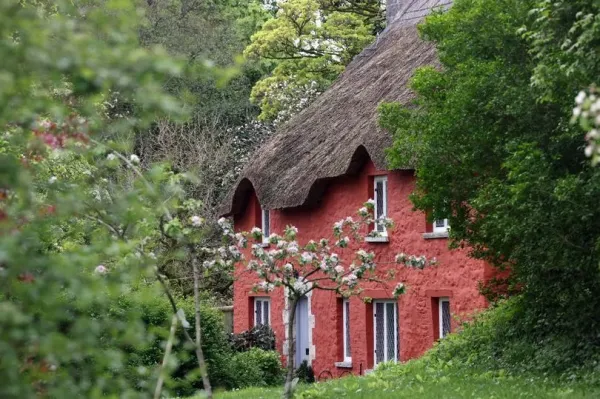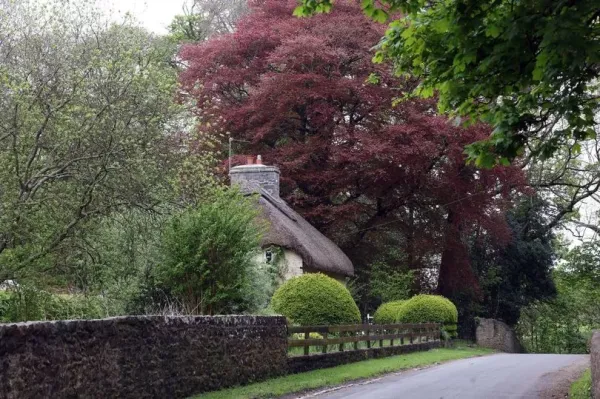Tucked away in the lush, rolling hills of Vale of Glamorgan, the quaint village of Merthyr Mawr is a real-life fairytale come to life. With its charming thatched cottages and awe-inspiring historical sites, it's more akin to a Cotswolds hamlet than a location just a quick ten-minute drive from Bridgend.
Despite being home to a mere 300 residents and lacking a high street, this picture-perfect Welsh village has made its mark on the silver screen. Its nearby dunes were used as a filming location for the 1962 classic Lawrence of Arabia, according to Discover Britain. A gently babbling brook meanders through ancient woodland, while Shire horses graze in the verdant fields. And the best part? This hidden treasure is often devoid of crowds. The village's name, Merthyr Mawr, originates from Merthyr Mymor or Myfor, a Welsh Saint believed to have met his end on these very grounds, reports Wales Online.

Archaeological research over the years has traced the village's roots back thousands of years, even identifying it as a hub of prehistoric activity. Artefacts ranging from Stone Age flints to Bronze Age burial sites have been discovered here. Beyond the dark ages, visitors can marvel at Roman roads that sit alongside Victorian stonework. At the heart of the village lies the Merthyr Mawr Estate. This 19th-century mansion was constructed by landed gentry Sir John Nicholl.
- I went on an adults-only trip to one of UK's best family holiday parks — everyone asked me 1 question
- 'I went to seaside town frozen in time and was so relieved when I left'
To this day, it remains a private residence with the majority of the village and surrounding property owned by those who live there. This means that properties in the village are highly sought after as they seldom come up for sale and have often been in the family for generations. The best way to explore Merthyr Mawr is on foot - to fully appreciate the unique views and tranquil atmosphere. You can stroll past the village greens and the tennis club towards St Teilo's Church.

Its graveyard is awash with vibrant flowers in the spring and summer months. During the day, sunlight streams through the intricate stained-glass windows. Believed to be built on the site of a structure that predates the 19th century, the church also houses a small collection of inscribed medieval stones from the 5th century. A ten-minute walk from the church will lead you to Ogmore Castle.
Nestled next to the Ewenny River, you can access its robust stone walls by stepping across ancient stepping stones used by the castle's princess, who, according to legend, used them to meet her lover on a neighbouring bank of land. This 12th-century keep once protected the Norman-held lands of Glamorgan. Further along, you'll find Candleston Castle, a later 14th-century manor house, fortified for the de Cantaloupe family.

If you've had your fill of culture and fancy some fun, there's an outdoor sauna tucked away in the woods where you can unwind. This sauna is a traditional Lithuanian spot, meaning it uses a wood-fire to heat its hot tubs. Venture along the coastal path to the Merthyr Mawr Warren National Nature Reserve and you'll discover something truly unique - a 'Sahara Desert' that featured in Lawrence of Arabia. After your enchanting adventure, if you're feeling peckish, make your way to Ogmore village. Here, Cobbles Kitchen serves up a mouth-watering roast. To round off your day, pop into the Pelican Inn for a cosy pint by the fireside.
Contact to : xlf550402@gmail.com
Copyright © boyuanhulian 2020 - 2023. All Right Reserved.